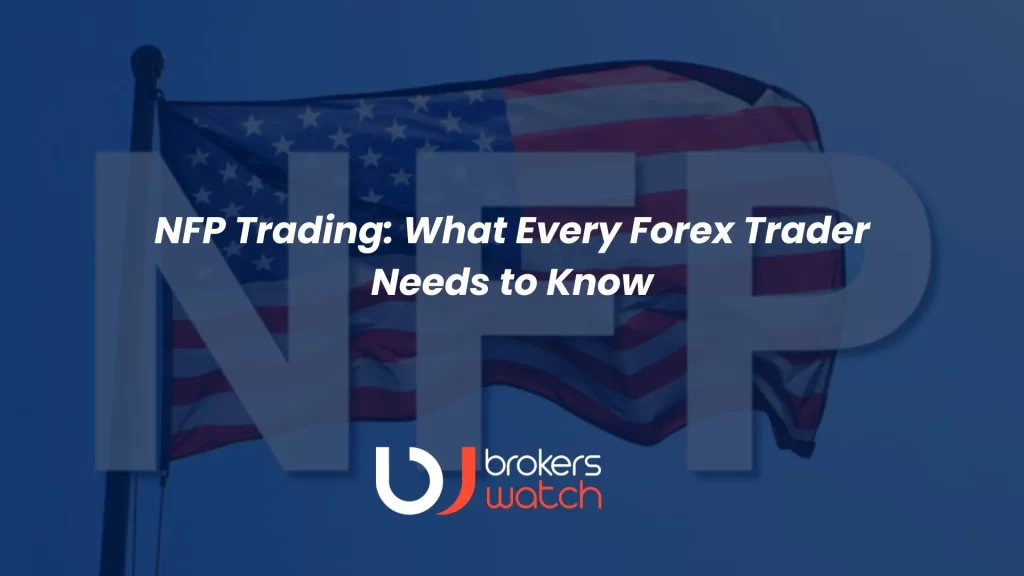What is NFP in Forex?
The US Non-farm Payrolls (“NFP”) is an official statistic released by the US Department of Labor, usually on the first Friday of each month.
Non-farm payrolls data is a measure that counts the current U.S. employment rate and is usually released along with the U.S. unemployment rate. It is a key indicator that analysts and traders use to determine the state of the US economy. The non-farm payroll counts employees in all sectors, except agriculture, local government, private households, and non-profit organizations.
NFP data can provide valuable insights about upcoming major data releases, such as manufacturing data and Gross Domestic Product (GDP) figures, making them a reliable indicator of the health of the U.S. economy. This is because it shows that a larger number of employed individuals within a country indicates a higher likelihood of robust economic output at the conclusion of the quarter, while a smaller number suggests the opposite.
When is NFP released?
NFP is typically made available on the first Friday of each month at 8:30 AM (EST) or 1:30 PM (UK time) and provides information regarding both month-on-month and year-on-year data comparisons. The month-on-month data compares the current month’s figures with those of the previous month, whereas the year-over-year data compares the present month’s statistics to those from the corresponding month of the previous year.
Traders can take positions in the US dollar and US indices based on whether NFP is above or below expectations.
How does NFP data affect forex?
All major currency pairs that use the US dollar as a counter or base currency are affected by NFP data. Some of these currency pairs are EUR/USD, USD/CAD, USD/JPY, GBP/USD.
Before opening a trade, traders should calculate the average volatility of previous NFP releases, adjust the profit target and stop losses, and calculate the average volatility of previous NFP releases.
For example, using the same stop loss for USD/CAD and GBP/USD is a bad practice. Instead, the major currency pairs above are best to trade after the release of the NFP report.
Which assets are impacted by the NFP data?

1. US Dollar
The NFP report primarily influences the US dollar, although investors should anticipate the dollar to exhibit a bullish trend when it reflects positive results.
2. Gold
The price of gold is affected by the NFP due to the influence of the dollar. However, as long as there is physical or industrial demand in the economy, high NFP will support gold prices.
3. Oil
The NFP report is an important economic indicator that has an impact on the demand for oil, gas, and energy. A positive NFP typically corresponds with an increase in energy consumption for residential, industrial, commercial, and transportation purposes. However, it is worth noting that the NFP report alone is not sufficient to accurately predict the price fluctuations of oil.
4. Indices
The NFP data has a significant influence on stock market indices, which impacts individual stocks. In bear markets, the nfp figures serve as a critical resource for anticipating market trends. Therefore, a decline in the NFP data suggests shifts in market conditions, particularly in the case of low wages.
How to trade the NFP report?
Some traders are taking positions in the market around the NFP releases as the data has historically been known to cause sudden price movements in the market giving a rise to potential trading opportunities.
There is one strategy that many traders seem to prefer more. It’s what is called as the pullback strategy, in which traders wait for a currency pair to retrace before entering a trade.
Why the NFP is important for traders?
NFP data is carefully monitored and analyzed by currency traders, futures traders, stock traders, and option market traders. Generally this is because stocks and currencies are affected by the NFP release.
The US dollar, which is the world’s largest economy and primary currency, has a significant impact on global assets. The non-farm payroll statistics may vary significantly from one month to another, influenced by the Federal Reserve’s economic policy decisions.
Financial markets can become unstable when investor’s perspective change. As a result, market volatility can present traders with greater trading prospects and potential profits. Hence, traders must incorporate NFP trading tactics that leverage the resulting fluctuations for optimal profit potential.
FAQs
1. What is NFP trading?
On the first Friday of each month, a report on Non-Farm Payrolls is issued. This report includes earnings data from all non-agricultural employees, regardless of whether they are employed by private households, government agencies, non-profit organizations, or farms. It is almost certain that the publication of this report will affect the markets. A larger NFP figure would likely result in traders buying the dollar, whereas a lower number would result a selling trend among traders.
2. What time does NFP come out?
The NFP data is published at 08:30 EST (13:30 GMT) on the first Friday of every month. Typically, the market remains active for approximately four hours following the release.
3. Is it good to trade on NFP week?
Although the NFP market can be extremely profitable, successful risk management is critical, and there is no guaranteed of the outcomes. Trading in the NFP market is best suited for individuals experienced in day trading and news trading.
Bottom Line
After the NFP Report’s initial volatility subsides and the market decides which way to go, the logic behind trading on the NFP Report is based on waiting until the market digest the data.
A modest stop loss increases your chances of profiting from the big moves that almost always occur with every NFP release.


